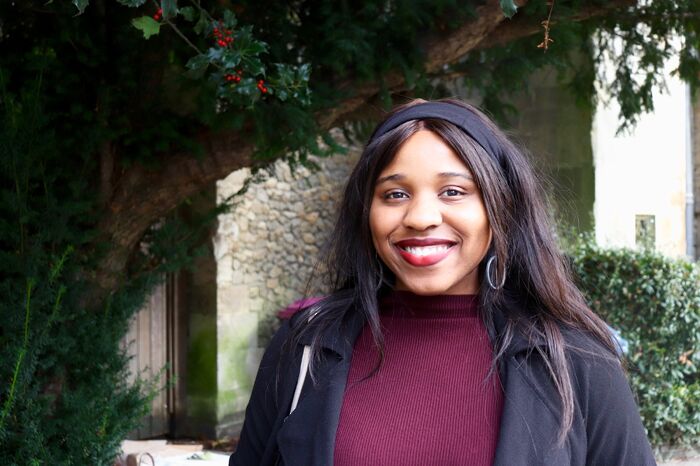Rebecca Algie: “Cambridge makes my art more analytical”
In the first instalment of a new column on Cambridge student artists, Lydia Bunt interviews Varsity illustrator Rebecca Algie.

This term, Varsity Arts will feature a column comprised of interviews with student artists, and at the start of a new year, it seems fitting to begin close to home. Increasingly, Varsity is hosting art by a number of talented student illustrators. And yet, its images are often a lesser-analysed side of the paper. They’re there to complement the articles, but how do they contribute to the making of the paper as a whole – and who are the student creatives behind them?

Second-year Sidney student Rebecca has been illustrating for the paper since starting at Cambridge. We meet against the humming backdrop of Saint Andrew's Street, looking out from a window seat with drinks in hand. The busy city seems to spin back Rebecca’s varied inspirations. She took an A-Level in Art, as well as English, French and Psychology. She finds source material in varied places but cites Rembrandt’s etchings as an important influence. Her interest in etching has fed into her illustration style, which relies a lot on mark-making. Studying linguistics at Cambridge, she finds herself straddling the arts and the sciences, but has always seen herself as firmly situated within the creative camp.
“Having a brief means you have something in your mind that you want to communicate.”
What does she enjoy most about illustrating for Varsity? “Art is an escape from work; it’s the thing that I enjoy doing the most, and it’s relaxing,” she comments. “When it’s for Varsity, I feel like I’m doing something productive as well.” She has illustrated on topics ranging from the MML year abroad to the influence of technology on our lives. I wonder aloud whether it’s useful or limiting to have to work to a brief when illustrating for the paper. But Rebecca sees it as a problem or puzzle, to be teased out to illustrative ends. “Having a brief means you have something in your mind that you want to communicate,” she says. Of course, the end product will resonate with different people differently, which is part of the appeal of putting illustrations together with journalistic features – it opens the text up to a creative dimension.
Does being in Cambridge affect the kind of art she produces? “I’m a lot more critical in the way I approach things,” Rebecca decides. She explains that, before starting at Cambridge, she might have just made a line drawing or an etching because she felt like using that media on that particular day. But now, and especially when illustrating for Varsity, she starts with a given concept and thinks about what she is trying to communicate through the piece of art. In Cambridge of all places, where opinions are free-flowing and students are quick to analyse, it seems particularly important that a piece of art has an idea-driven foundation. “The analytical skills that you get from a Cambridge degree have influenced the way I approach making an artwork.”

I ask if Rebecca has any advice for student creatives who haven’t yet managed to find a platform for their work at Cambridge. “Look out for things that are advertised that you can get involved in,” she says. For example, “Illustrating for Varsity is easy-going, and you can pick up jobs when you want to.” Though admitting that it can sometimes be hard to find the time for larger paintings while at university, she finds Varsity’s sign-up system an ideal way to manage art and study simultaneously. She also mentions the CU Arts & Crafts Society based in Magdalene and art therapy sessions at Sidney as artistic outlets, providing remittance from the haste of a degree here.
"There is so much art already within the newspaper itself; art made by a creative student body and fuelled by topical discussions."
Adding journalistic direction to her artwork has enabled Rebecca to think of it, not just as a hobby, but as a way to show an idea or tell a story. And that, after all, is what journalism is all about. Varsity Arts is home to countless reviews and cultural commentaries on exhibitions and arts news, but it’s important to remember that there is so much art already within the newspaper itself; art made by a creative student body and fuelled by topical discussions.
 Features / Cloudbusting: happy 10th birthday to the building you’ve never heard of30 March 2025
Features / Cloudbusting: happy 10th birthday to the building you’ve never heard of30 March 2025 News / Uni offers AI course for Lloyds employees30 March 2025
News / Uni offers AI course for Lloyds employees30 March 2025 News / Caius clock hand returned nearly 100 years after student prank31 March 2025
News / Caius clock hand returned nearly 100 years after student prank31 March 2025 News / Hundreds of jobs to be cut at Cambridge University Hospitals1 April 2025
News / Hundreds of jobs to be cut at Cambridge University Hospitals1 April 2025 News / Ski mask-wearing teens break into Caius accommodation27 March 2025
News / Ski mask-wearing teens break into Caius accommodation27 March 2025





